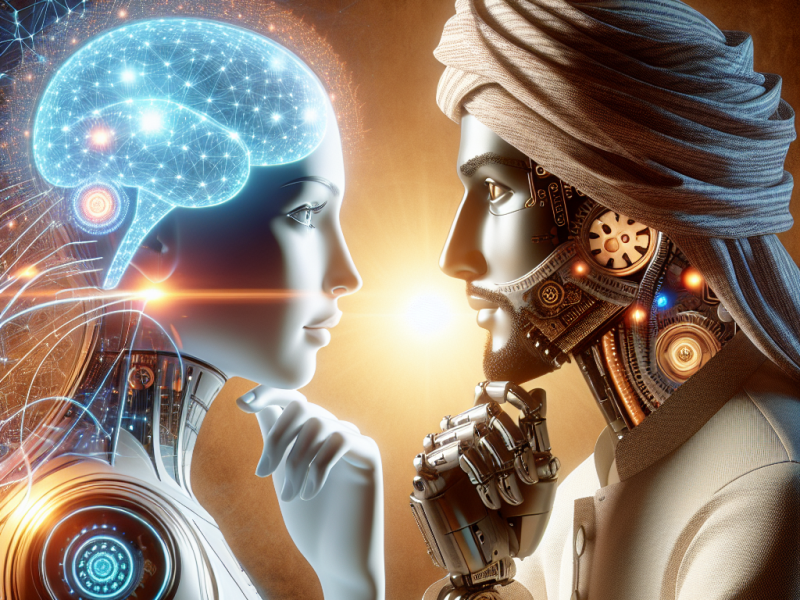In today’s digital-first world, chatbots have become indispensable for businesses aiming to streamline customer support, improve engagement, and automate repetitive tasks. With recent advancements in artificial intelligence, especially in the realm of Large Language Models (LLMs), chatbots are more powerful and versatile than ever before. We will explore their core differences, advantages, limitations, and the unique use cases they serve. Whether you’re a business owner, a developer, or an AI enthusiast, understanding these differences can help you decide which technology suits your needs.
Definition and Characteristics of LLM-Powered Chatbots
LLM-powered chatbots represent the cutting-edge of chatbot technology. Unlike traditional bots, they leverage large-scale neural networks trained on vast datasets to understand and generate human-like text. These bots can handle complex questions, respond in conversational tones, and provide more personalized responses based on context.
Key Characteristics:
- Context Awareness: Can keep track of the conversation flow, making interactions feel more natural.
- Learning Ability: These bots improve through data inputs over time, adapting to changing conversational needs.
- Broad Query Handling: Capable of addressing a diverse range of questions without specific programming for each scenario.
By using LLMs like GPT-4, these chatbots excel in providing a seamless, human-like experience, ideal for businesses that require nuanced customer interactions.
Definition and Characteristics of Traditional Chatbots
Traditional chatbots, in contrast, rely on rule-based systems or scripted dialogues to interact with users. These bots are usually programmed to answer specific questions or perform predefined tasks, making them reliable for straightforward customer service scenarios.
Key Characteristics:
- Rule-Based Logic: Operate on predefined scripts or decision trees, restricting their flexibility.
- Limited Scope: Effective for predictable, routine inquiries, such as FAQs or simple task automation.
- Fast Response Times: Given their lack of heavy computational demands, traditional bots can quickly respond within their predefined limits.
While they lack the adaptability of LLM-powered bots, traditional chatbots are still widely used in industries where basic query handling is sufficient, such as retail and hospitality.
Key Differences Between LLM-Powered and Traditional Chatbots
The primary distinction lies in their underlying technology. LLM-powered chatbots utilize advanced machine learning techniques, enabling them to understand nuances in language and provide more dynamic interactions. In contrast, traditional chatbots are restricted by their programmed logic and lack the ability to learn from new data.
Advantages of LLM-Powered Chatbots
LLM-powered chatbots offer several transformative advantages for businesses aiming for more robust customer support and engagement.
- Improved Conversational Abilities: With an understanding of natural language, these chatbots can hold more meaningful conversations.
- Enhanced Personalization: By leveraging past data and context, they can personalize responses, which leads to higher customer satisfaction.
- Greater Versatility: Can handle diverse queries and even unexpected questions, making them adaptable in dynamic environments.
- Scalable Solution: As the dataset grows, LLM-powered chatbots improve, offering a scalable solution for growing businesses.
These benefits make LLM chatbots a valuable tool for sectors such as healthcare, finance, and e-commerce, where nuanced interactions significantly impact customer experience.
Limitations of LLM-Powered Chatbots
Despite their advantages, LLM-powered chatbots come with a set of limitations that businesses should consider.
- High Computational Costs: LLMs require substantial computational power, making them costlier to deploy and maintain.
- Bias and Ethical Concerns: Since LLMs are trained on extensive datasets, they may inadvertently reflect societal biases present in the data.
- Data Privacy Risks: Handling sensitive data requires stringent privacy measures, particularly in regulated industries like finance and healthcare.
- Training Data Requirements: LLM-powered chatbots need vast amounts of data to perform optimally, which can be a hurdle for smaller businesses with limited data resources.
Use Cases for LLM-Powered Chatbots
LLM-powered chatbots can deliver high-impact results in areas that require sophisticated conversational capabilities and adaptive responses.
- Healthcare: Assist patients by answering complex medical inquiries or managing appointment schedules.
- Customer Support: Provide detailed assistance across various queries without pre-scripting every potential question.
- E-Commerce: Guide users through product selections with personalized recommendations based on browsing history and preferences.
- Finance: Aid in financial advising, answering detailed questions on products, and even analyzing user patterns to provide insights.
These use cases demonstrate the broad applicability of LLM-powered chatbots, particularly for businesses looking to offer more than basic customer support.
Future Trends in Chatbot Technology
The future of chatbot technology will likely see continued advancements in natural language understanding, seamless integration with other AI tools, and enhancements in ethical AI practices.
- Enhanced Language Models: Researchers are working on reducing biases and improving the contextual accuracy of LLMs, making future chatbots even more reliable.
- Hybrid Chatbot Systems: Combining the benefits of both LLM-powered and traditional chatbots to create hybrid solutions optimized for cost and performance.
- Better Privacy and Security Controls: As regulatory standards evolve, chatbots will integrate more advanced security features, crucial for industries handling sensitive data.
- Increased Customization: AI platforms are enabling companies to fine-tune LLMs for specific industries, improving relevance and accuracy.
As businesses increasingly integrate chatbot solutions to enhance customer engagement, understanding the distinctions between LLM-powered and traditional chatbots is essential. LLM-powered chatbots offer a significant upgrade in conversation quality, adaptability, and personalization, making them suitable for complex, dynamic interactions. Traditional chatbots, on the other hand, are cost-effective solutions for routine, predictable inquiries. By weighing the pros and cons of each type, businesses can make informed decisions, leveraging the best of both worlds to create a superior customer experience and stay competitive in an AI-driven landscape.
For personalized solutions and expert guidance, contact us today to transform your customer interactions with cutting-edge chatbot technology.

